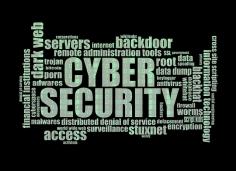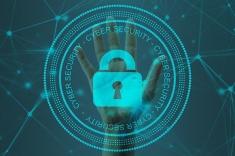
4 minute read
Tech Topics
Wi-Fi Protection
Connecting to public Wi-Fi can bring several dangers when discussing the idea of Cyber Threats. Some of the dangers that come with connecting to a public Wi-Fi are the possible theft of personal information as well as cyber-attacks on businesses. Other potential dangers are unencrypted connections, packet sniffing/eavesdropping, potential malware, and also session hijacking. Connecting to public Wi-Fi doesn't help avoid Cyber Threats, but there are ways to make it much more secure.
Advertisement
The use of a VPN helps keep your personal information secure rather than using public Wi-Fi. Using a VPN encrypts everything that you send and receive over a Wi-Fi network. Some Wi-Fi networks or websites you access may or may not support encryption, but a VPN will still encrypt everything. When you use a VPN, you connect to the VPN server over an encrypted connection, pushing everything you do through that server. The use of a VPN is a helpful process to avoiding Cyber Threats.
Security Awareness Training Taking the proper security awareness training to avoid cyber threats can be a huge help when trying to identify cyber threats. Some of the areas for security awareness training are training for avoiding blunders, training to increase security measures, and training to save organizational reputation. Security awareness training also helps boost morale as well as save time & money and giving people peace of mind.
Mail Security Moving to remote working and working on the go, mail security is that much more important. There are several different aspects to mail security, spam filtering being one of them. Spam filtering has content filters which review the content inside of the messages to decide if they are genuine or spam. Another filter for mail security to avoid Cyber Threats is permission filtering. This ultimately restricts the sender to be approved by the recipient before accepting any correspondence.
Header filtering and General-blacklist filtering are looking at the email header to identify infectious information and stopping all emails that come from a known list of spammers respectively. Rulebased filtering is yet another way to improve mail security, avoiding cyber threat. It is filters that define a set of criteria and standards for identifying a particular message as a spam message. One last filtering that is used for improving mail security is challenge-response filtering. This type of filtering protects outbound spam message and requires permission before sending the message.
Adaptive Threat Protection Adaptive threat protection allows for security professionals to know what happens when a file with malicious content is detected. There are several benefits when it comes to adaptive threat protection and antivirus software. Adaptive threat protection allows for early detection of security compromises and automatic response when a malicious event occurs. ATP can also prevent data theft and sabotage. Adaptive threat protection also quickly detects and protects against cybersecurity threats and attacks such as malware.
Device Encryption Device encryption is the process of scrambling data into illegible code and making it indecipherable to anyone without a password/recovery key. The data is encoded using an encryption algorithm to turn it into an unreadable format (plaintext vs. ciphertext). There are two main types of encryption -- symmetric encryption and asymmetric encryption. Symmetric Encryption is a popular encryption technique that uses the same key for the encryption and decryption process. Asymmetric Encryption is a more secure form of encryption as it uses two keys, a public key and private key, for the encryption and decryption process.
Firewalls Firewalls are used to help filter the traffic going to a computer. There are two main types of firewalls, those being a hardware firewall and a software firewall. A hardware firewall is a physical device much like a server that filters the traffic going to a computer. Some benefits of a hardware firewall are that it can be used to intelligently control the traffic that reaches your server. It can also be configured with specific rules for all traffic. A hardware firewall eases the burden on other server resources. For example, you can disable software firewalls, which can free up much-needed memory and processor power.


A software firewall is a special type of computer software with the main purpose being to protect your computer and server from outside attempts to control or gain access. Benefits of a software firewall are that configuration is very easy and that it is flexible.
Two-Factor Authentication Two-factor authentication is an extra layer of security to make sure that people trying to gain access to an online account are who they say they are. After a user enters their username and password, they will then be required to provide another piece of information. Some benefits of two-factor authentication (2FA) are stronger security, reducing fraud and building secure online relationships, boosting productivity with mobility, and reducing help desk costs.
Cyber Security Advocates Hopefully our tips to avoiding cyber threats will be useful to you. If you feel vulnerable to cyber threats, it's important to know the steps to take in order to feel more secure. If you need help with keeping your data secure or are considering security awareness training and other tools to keep you safe, we can become your cyber security advocates.
Sources: https://www.duocircle.com/content/email-filteringservice/anti-spam https://goodspeed.io/blog/7-dangers-of-publicwifi.html https://aware.eccouncil.org/7-excellent-advantagesof-security-awareness-training.html https://www.logsign.com/blog/what-is-adaptivethreat-protection/ https://www.fireeye.com/products/helix/what-issiem-and-how-does-it-work.html https://hexnode.medium.com/what-is-deviceencryption-and-why-do-you-needitd8019640b825#:~:text=Device%20encryption%20is %20the%20process,to%20as%20'ciphertext'). https://www.fortinet.com/resources/cyberglossary/hardware-firewalls-better-than-software https://www.geeksforgeeks.org/difference-betweenhardware-firewall-and-software-firewall/s





